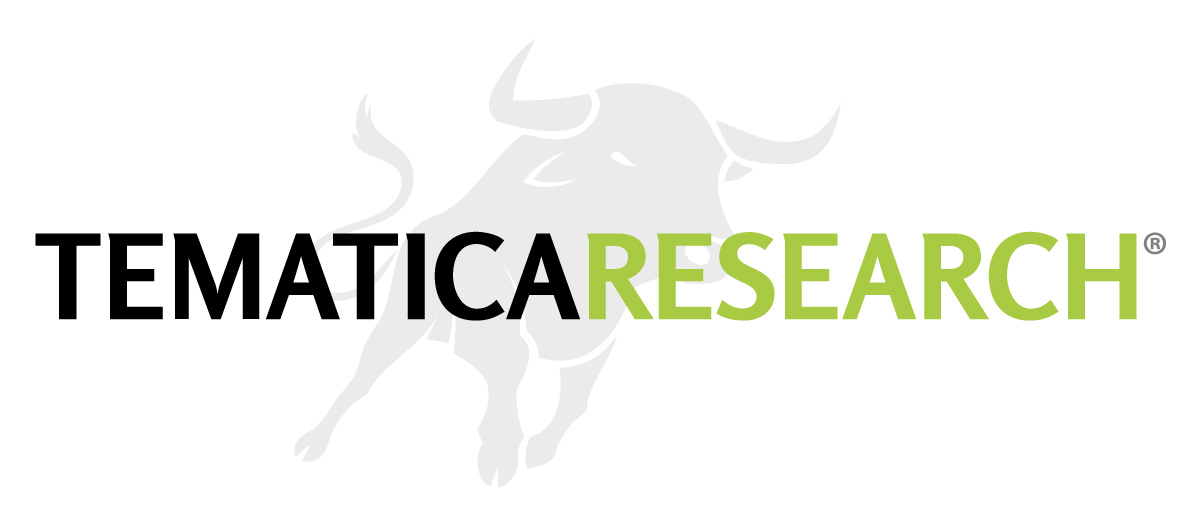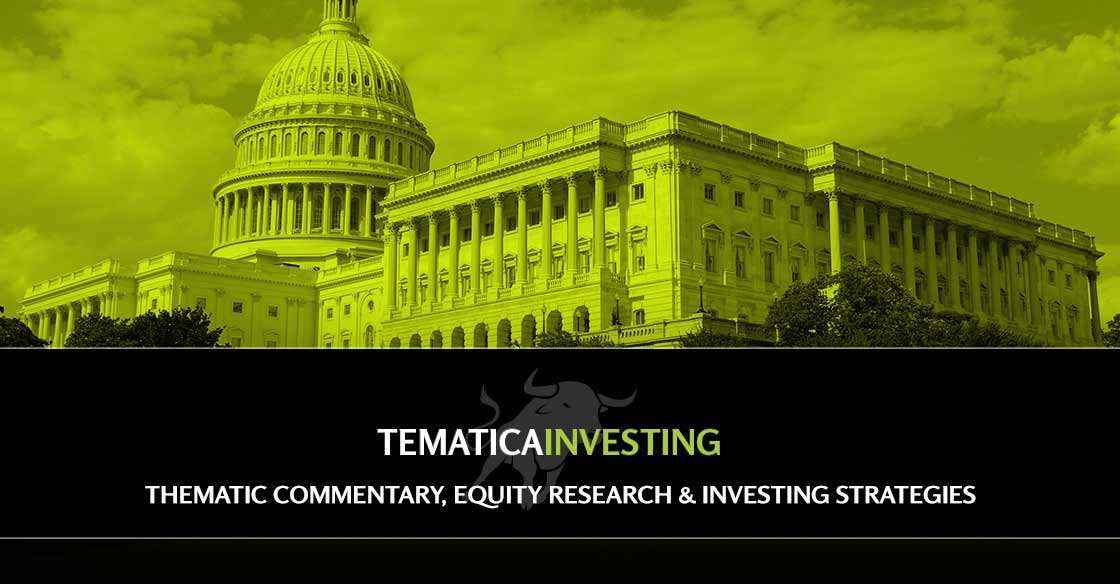WEEKLY ISSUE: Making Heads or Tails Out of Tax Reform
Earlier this week, we provided a slew of updates as we scaled into the Trade Desk (TTD) position on the Tematica Investing Select List, boosted a few price targets and prepped for Thursday’s earnings from Applied Materials (AMAT).
Normally in these weekly issues of Tematica Investing we tend to focus on our thematic investing framework, but from time to time one particular ingredient to that framework can bubble up and take a commanding presence in the market. In today’s case, we’re referring to the political environment as Washington focuses on tax reform. After months of speculation over tax reform, we now have competing proposals on how to reduce corporate taxes and put more capital in the hands of individual taxpayers.
From an investing perspective, there has been much buildup over what this could mean for both the U.S. economy as well as corporate profits and earnings per share as early as 2018. If you’re thinking this sounds like expectations are likely ahead of themselves, we’re right there with you.
As I shared in this week’s Monday Morning Kickoff, differences between the competing House and Senate tax reform plans have brought a new layer of uncertainty to the market as evidenced by the retreat in major market indices over the last several days. This has been especially true for small-cap stocks as the businesses underneath those companies tend to be primarily U.S.-based, which means changes to tax reform relative to what was expected are bound to cause investors to re-bake the cake that is 2018 forecasts, potentially to the downside. Moreover, potential aspects of tax reform proposals could make it more difficult for small-cap companies to retain or attract talent needed to drive their businesses.
Let’s review WHERE WE ARE WITH TAX REFORM
We recently received the GOP’s Tax Cuts and Jobs Act, which on its face looks to promote job growth, overhaul and simplify the tax code and reduce taxes. Over the last week, a competing plan from the Senate has emerged that, while it has the same basic framework as it cuts the corporate tax rate to 20%, has several more tax brackets than the House plan, establishes a lower tax rate for pass-through businesses and cuts individual rates.
As one can imagine, there are several differences that include pushing out corporate tax cuts until 2019 and preserving popular tax breaks, such as mortgage interest and medical expenses, and keeps a minimum tax rate of 10% for lower earners. It also removes the state and local tax deduction entirely.
As these competing plans gets parsed and negotiated, the one potential change that will rankle investors is delaying the cut in corporate taxes until 2019 and what that could mean to economic projections, corporate spending and job creation for 2018. The Conference Board is forecasting real GDP to reach 2.5% in 2018, up from 2.2% this year and 1.5% in 2016, despite there being headwinds associated with the dollar’s recent rise as well as prospects for higher interest rates year over year. While there will be some debate over the impact of pushing out tax cuts, odds are at a minimum it increases the headwinds to growth to be had in 2018.
As Larry Kudlow pointed out over the weekend, there are several risks to pushing out corporate tax cuts, including a greater use of tax avoidance and sheltering strategies next year and potential revenue loss as the tax delay could “deter foreign companies from coming to the United States.”
What I like about Kudlow is he points out there are issues with tax plans from both the House and Senate, but he also goes on to say that “differences between the two plans should narrow in conference.” Meaning the current proposals are a work in progress.
Kudlow is not alone, but there are others, like the pro-growth, limited-government Club for Growth, that are raising red flags that could make the closing of differences not quite so easy. For example, the Club for Growth argues the provision relating to “pass-throughs,” such as small and family-owned businesses, is misleading. While the first 30% of their income would be taxed at 25%, the remaining 70% would be taxed at as much as 45.6%.
Even the blended rate equates to at least 35%, which the club points out “means no tax cut at all for most small business and family-owned companies.” Let’s remember that new businesses, which tend to start out as pass-throughs, “account for virtually all new job creation in the U.S. and nearly 20% of gross job creation,” according to a 2015 study by the Kauffman Foundation.
It seems fairly logical that if we want to spur job creation and grow the taxable base, the pass-through item will need to be revisited. If not, it means potentially recalculating consumer spending expectations for 2018 and beyond, and as we know, consumer spending is directly or indirectly responsible for roughly two-thirds of the domestic economy.
Another provision that has gone largely ignored, yet will impact the ability of corporations to retain good talent, is the provision that imposes retroactive taxes on “nonqualified deferred compensation” (NQDC) plans. For more on the ins and out of these plans, here’s a good overview.
As reported by Bloomberg, the issue is this:
“The initial version of the Tax Cuts and Jobs Act (H.R. 1) would have severely curtailed the use of nonqualified deferred compensation plans by lumping that compensation into an employee’s taxable wages. The bill also would have expanded these packages to include stock options and stock appreciation rights, making them all subject to wage taxes.
“Under the amendment to the House bill, nonqualified deferred compensation packages — including future commission payments and stock options — will continue to follow current law in tax code Section 409A and will be subject to tax only when compensation is cashed out.”
Turning to the Senate bill, in its current form it would tax money set aside in nonqualified deferred compensation plans immediately compared to today, as explained by Fidelity, “you don’t pay income taxes on deferred compensation until you receive those funds.”
If the policy change in the Senate proposal finds its way into the final tax reform bill, the growing consensus is it “could force many U.S. companies to stop offering these types of programs,” and that calls into question how companies would retain key executives and other talent. While it could be argued that larger companies may possibly weather the storm better, this would appear to be another headwind for smaller companies that more often tend to rely on less than a handful of key people to drive the company and execute its vision.
Where do we go from here?
According to House Speaker Paul Ryan, the Ways and Means Committee has approved the Tax Cuts and Jobs Act and now the bill will head to the House floor for a vote later this week. Let’s remember the bill must not only pass the House, but also the Senate, and that likely means there will be much back and forth to be had in the coming days.
With no identifiable market catalyst on the horizon, odds are stocks, especially small-cap ones, will be range-bound until we have clarity one way or another on tax reform and its timing. While the market waits, we’ll continue to look for well-positioned companies that meet our investment mandate as well as parse data points using our time-tested and trusty thematic lens.




